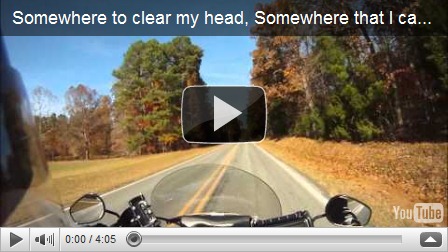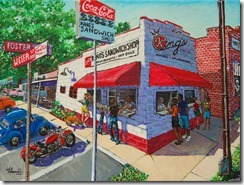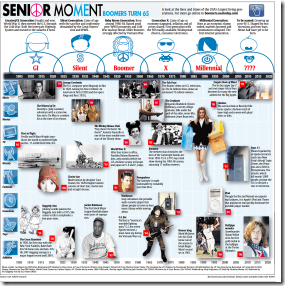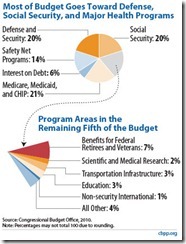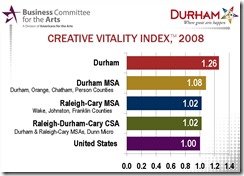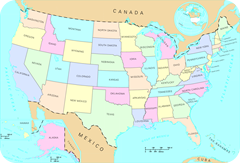Twenty years ago Durham clearly had an image problem. New in town, I asked around to learn 1) the source and 2) who was in charge of remedying it. The answers I got were 1) no one knows, maybe its “us” and 2) it is your job to address it, welcome to Durham!
I had just been appointed the CEO of Durham’s newly-minted community or destination marketing organization, a position from which I’ve now been retired nearly a year. Prior to coming to Durham, I had produced a Clio-winning “pride” campaign for another community where I’d worked previously but really I didn’t have a clue about community image. Turns out no one else did either.
So for inspiration we rolled up our sleeves and started to examine and learn from some other models taking any lessons that could be applied to unwrapping, benchmarking and ultimately improving community image. Finding no relevant texts or primers or white papers on the subject, we zeroed in on two movements for inspiration: political campaigns and civil rights. No claims of clairvoyance or strokes of brilliance, just adaptive innovation.
However, before I summarize what we learned, I must admit that I received a ton of unsolicited advice from a handful of people down in Raleigh, some with Durham interests, just not Durham’s best interests.
On several occasions the advisories were directed to me via news quotes and editorials published there. I was even amused on several occasions to be called out during public remarks at events at which I happened to be present. Can you say awkward? Sadly, no matter how hard I tried, it wasn’t possible to engage these folks about their concerns in face to face dialogue let alone secure their support.
Here are four groupings of this Raleigh-sourced advice about how to turn Durham’s image around:
- White Flag Advice – “Surrender and turn Durham marketing over to Raleigh or better yet, pretend Durham doesn’t exist and get on Raleigh’s bandwagon; we’ll even refer to it as the Triangle, on occasion. You know like the airport.” I may be from Idaho but I didn’t just fall off a spud truck and I know hegemony when I smell it…
- Bobby McFarrin Advice – “Don’t worry, be happy!” “Pretend there isn’t an image issue, sweep it under the rug, smile incessantly, don’t step on Raleigh’s toes and watch a lot of Pollyanna reruns.” Maybe I didn’t know much about image issues at the time but I knew that negative information trumps positive information by several times squared and you can’t just outrun it.
- Be Like Mike Advice – “Just go along to get along. Slick up a bit, be less funky, ignore slights. Durham’s always been a black town, be more white (they actually used those words) and when they shake out Raleigh’s table cloth, some crumbs will always fall Durham’s way.” That’s when I realized it may not all be about racism but racism is alive and well.
- Bless Your Heart Advice – “This image thing is all in your head. Individuals, communities and institutions aren’t trashing Durham, you’re just paranoid. Take a happy pill. Take a chill pill.” That’s when I knew that condescension rests at the heart of an image issue.
One may still hear echoes of these advisories from time to time as though they are new, often issued by someone trying to imply or take credit for any progress and, as we have experienced once or twice, while trying to surreptitiously undermine or impede legitimate efforts.
While I poke a little fun with the groupings above, I’ve always preferred to believe that these advisories while seeming self-serving, were and are generally sincere if not a bit odd and misguided. I also must credit several people in Raleigh, such as Harvey Schmitt, for always being supportive of the efforts needed to turn Durham’s image around and helping me to see through obstacles.
Before I summarize the sources upon which Durham’s image turn-around was modeled, it may be helpful to understand that research documented from the beginning that Durham never had a “self-image” problem or lack of community pride, quite the opposite. Durham’s off the chart in these areas, especially compared to other communities.
Durham’s image problem turned out to be centered in nearby communities. The job isn’t finished by any means but it is in excellent hands. With focused consistency, it is to Durham’s credit that in less than two decades it has reversed a (minus) –53% negative image in nearby communities to a (plus) + 70 positive image today. In positive to negative terms, that’s a swing from 4 to 1 negative about Durham to an almost 9 to 1 positive.
For comparison only, Raleigh, which doesn’t acknowledge or address any image issues of its own, has a just under a +3 favorability rating statewide with nearly a third uncertain, compared to Durham’s now + 64 favorability statewide with only 12% uncertain. Every community can benefit from acknowledging, monitoring and addressing community image.
Along the way, the improved Durham image contributed significantly to the feasibility for some huge brick and mortar projects and improvements which in turn must have also had some impact. I know because one of my roles was to help inform those studies along the way and to overcome concerns that were typically a result of the image issue.
However, even though Durham draws significant visitation from the other counties and metro areas where the community’s image has improved, these visitors, many of them repeat, still represent a fairly small proportion of those populations overall. Measures of “personal experience” among those that do visit here suggest that personal experience is driven more by broad factors such as signage than by isolated developments or enclaves, regardless of how spectacular they may be. With the perceptual image issue increasingly at bay, improving personal experience remains a significant challenge.
Now, let me summarize what we successfully adapted from political campaign and civil rights models and translated into strategies to turn Durham’s image problem around.
What we learned from political campaigns:
- Use scientific polls to isolate sources of negativity, benchmark progress and mine other data to put things in perspective.
- Reinforce Durham’s brand at every touch point, e.g. datelines, airport references, signage, postal addresses etc.
- Vehemently stand up for Durham whenever the community is wrongfully dissed or wronged but never over-reach.
- Be true to Durham’s genuine and authentic personality, never give up, reach out to critics.
- Build “both/and” alliances and partnerships, eschew either/or people, organizations and communities.
- Favorability is not about the people who know you but the people who form impressions second and third hand.
What we learned from the civil rights movement:
- Be assertive but never be zero sum or fight fire with fire.
- Be win/win, not either/or. Don’t expect everyone to show courage.
- Keep the faith, be persistent and always be resilient.
- Isolate the negativists, convert those who are uncertain to positivists.
- Don’t sell out for isolated monuments, focus on wide-spread curb appeal. Cathedrals come after image improves.
- Be yourself and celebrate diversity – discrimination and persecution are perception not reality-based.
For any success I had before retiring and the continuing and remarkable success of those that succeeded me, we’ll be forever indebted to those who pioneered these two areas from which we were able to adapt strategies that have truly turned Durham’s image problem around.


